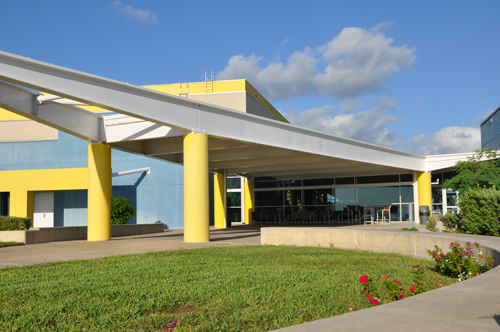Convention Centre History
The South Padre Island Convention Centre was built in 1992 on a 30 acre tract of Cameron County land designed by LMN Architects of Seattle, Washington. The building was built for an original cost of $12,750,000The current building square footage:
- Exhibit space - 22,500 (with 36' ceiling clearance)
- Meeting space - 9,000
- Theater - 3,000
- Lobby and circulation space- 16,000
- Administration space -2,500
- Kitchen space- 3,000
- Restroom and other support spaces- 15,000
- Storage -5,000
- Total square footage - 76,000
Currently there are 527 parking spaces
The general construction of the building is as follows: cast in place concrete slab on concrete piers with a class a structural steel - columns, bar joists, beams, purlins, and deck The Exterior building envelope is a hard shell, synthetic stucco on exterior insulated finish system on galvanized steel studs with painted sheet rock interior; the windows are 1" insulated glass (non-impact resistant) "Vista Wall" storefront. The front and rear exterior canopies are exposed steel (painted)
The Convention Centre is located on the northern end of the City of South Padre Island with vehicular access off of Highway 100. The building is surrounded by native vegetation and wetlands. To the north, the building is bound by a large expanse of tidal flats and to the south there is the Birding and Nature Centre. The Convention Centre overlooks the Laguna Madre to the west and is across Highway 100 from the County Park
In 2008, Hurricane Dolly caused extensive damage to the roof and some walls in the facility. Although the roof was replaced completely, the exterior walls and windows have not been replaced to the extent needed to bring it up to current code requirements.
The City of South Padre Island has completed several studies in order to determine the extent of repair work that needs to be done to the existing facility and to determine the feasibility of expanding the facility to attract larger conventions and create needed business during the winter months.
The following studies have been completed:
- Feasibility and Master Plan Study for the South Padre Island Convention Centre - C.H.Johnson/ TVS Report (2005)
- Existing Facilities Needs Assessment, ROFA Architects (2012)
- SPI Convention Centre Wetland Determination- HDR Engineering Inc.(January 2013)
- Roofing Report- SPI Skylights- Amtech, Building Sciences, Inc (January 2013)
